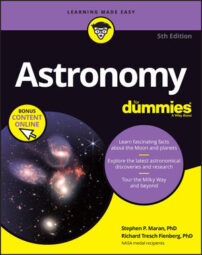1957 The Soviet Union launches Sputnik 1, the first artificial satellite to orbit Earth.
1958 Using the satellite Explorer 1, James Van Allen discovers Earth’s radiation belts (magnetosphere).
1960 Frank Drake begins the Search for Extraterrestrial Intelligence (SETI) at the National Radio Astronomy Observatory in Green Bank, West Virginia.
1961 Yuri Gagarin makes the first manned space flight.
1963 Valentina Tereshkova is the first woman in space.
1967 Jocelyn Bell Burnell and Anthony Hewish discover pulsars.
1969 Neil Armstrong and Buzz Aldrin walk on the moon.
1971: The Soviet Union launches the first space station, Salyut 1.
1972: The Soviet Union's Mars 3 spacecraft makes first soft landing on another planet, Mars.
1979 Using pictures from Voyager 1, Linda Morabito discovers erupting volcanoes on Jupiter’s moon, Io.
1981: NASA's Columbia shuttle becomes first winged spaceship to orbit Earth and return to airport landing.
1987 Ian Shelton discovers the first supernova since 1604 plainly visible to the naked eye.
1990 The Hubble Space Telescope launches.
1991 Alexander Wolszczan discovers planets orbiting a pulsar — the first known planets outside the solar system.
1995 Michel Mayor and Didier Queloz discover 51 Pegasi B, the first planet of a normal star beyond the Sun.
1998 Two astronomer teams discover that the expansion of the universe is getting faster, perhaps due to a mysterious “dark energy” associated with the vacuum of space.
1999 Mars Global Surveyor finds that Mars may have had an ocean at one time.
2003 The Wilkinson Microwave Anisotropy Probe satellite finds that the universe is 13.7 billion years old.
2012 The Kepler spacecraft finds that there probably are billions of planets in orbit around stars in our galaxy, and the rover Curiosity lands on Mars.
2015 The New Horizons probe explores Pluto and its moons and then heads outward in the Kuiper Belt.

